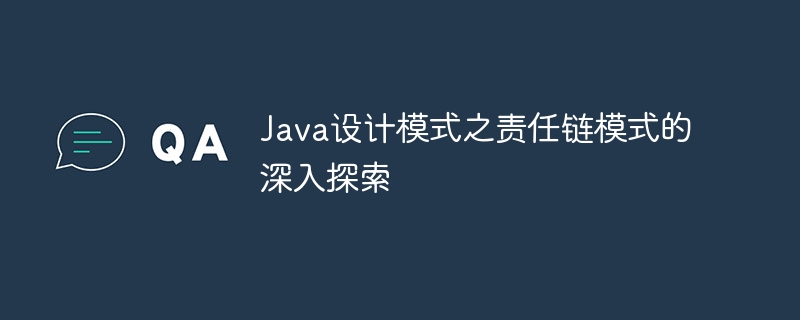
The Chain of Responsibility pattern is a design pattern that allows you to pass requests to a set of objects in order until the request is processed or all objects have tried to process it. It contains the following components: Handler, abstract Handler and Client. Advantages include: loose coupling, scalability, and reusability. Filter chains are a common practical example.

In-depth exploration of the chain of responsibility pattern of Java design patterns
Introduction
The Chain of Responsibility pattern is a design pattern that allows you to create a set of objects that handle requests in sequence. When an object cannot handle a request, it passes the request to the next object in the chain.
Structure
The chain of responsibility pattern contains the following components:
Working Principle
The chain of responsibility model works as follows:Advantages
There are some advantages to using the chain of responsibility pattern:Practical case
Filter chain
The filter chain is a common example of using the chain of responsibility pattern. . It consists of a set of filters that process requests sequentially. If a filter does not satisfy the request, it passes the request to the next filter in the chain. A simple filter chain example is as follows:public class FilterChain {
private List<Filter> filters;
public FilterChain(List<Filter> filters) {
this.filters = filters;
}
public void doFilter(Request request, Response response) {
for (Filter filter : filters) {
filter.doFilter(request, response);
}
}
}
public interface Filter {
void doFilter(Request request, Response response);
}
public class AuthenticationFilter implements Filter {
@Override
public void doFilter(Request request, Response response) {
// 验证请求
}
}
public class AuthorizationFilter implements Filter {
@Override
public void doFilter(Request request, Response response) {
// 授权请求
}
}
public class LoggingFilter implements Filter {
@Override
public void doFilter(Request request, Response response) {
// 记录请求和响应
}
}
public class Main {
public static void main(String[] args) {
FilterChain filterChain = new FilterChain(
List.of(new AuthenticationFilter(),
new AuthorizationFilter(),
new LoggingFilter())
);
filterChain.doFilter(request, response);
}
}The above is the detailed content of An in-depth exploration of the chain of responsibility pattern in Java design patterns. For more information, please follow other related articles on the PHP Chinese website!
